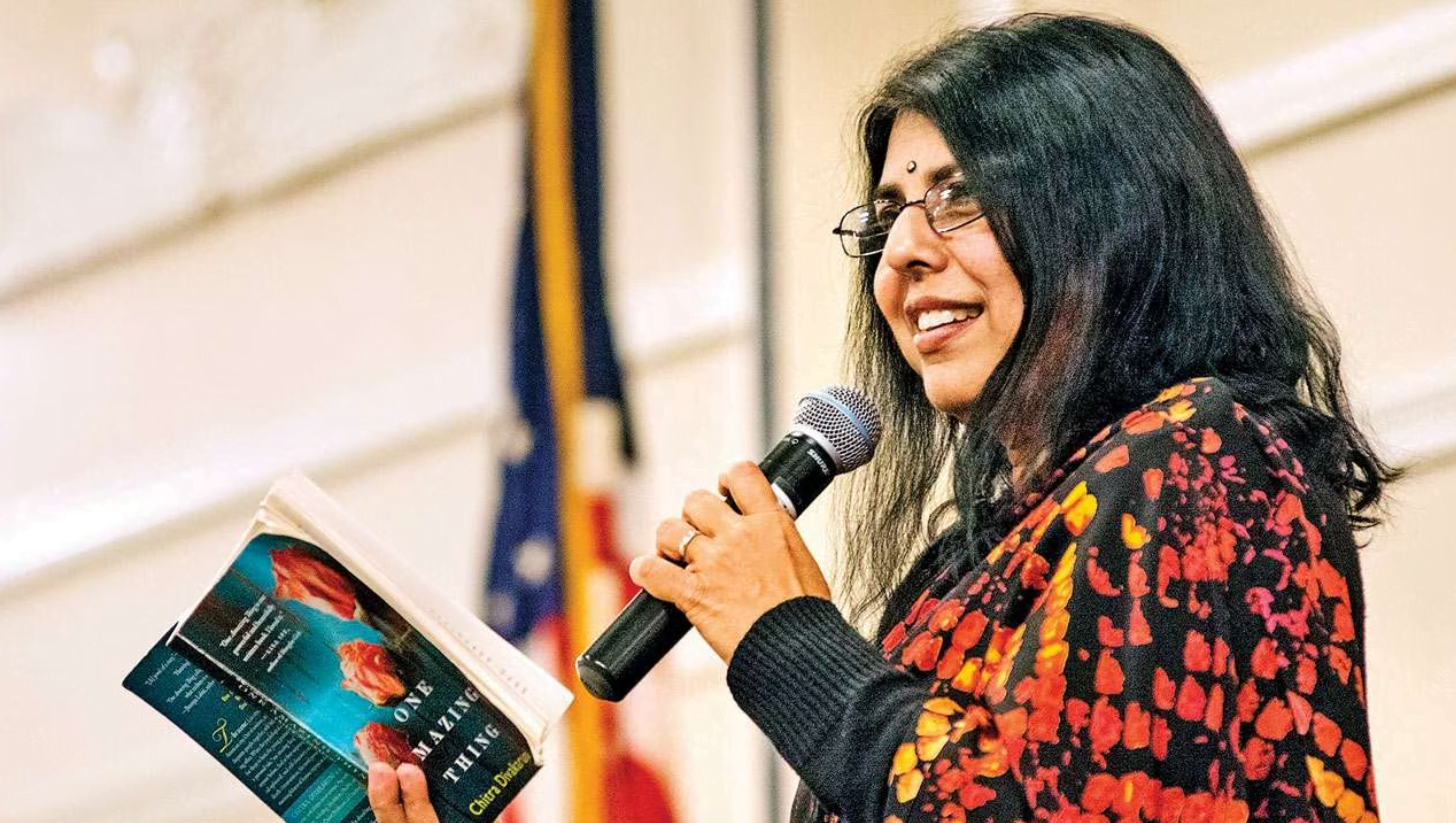Fragile Monsters by Catherine Menon is a compelling narrative that encompasses over a century of Malaysia’s tumultuous history, capturing three decisive phases – the British colonization, the Japanese occupation of Malaya during World War II, and the Malayan Emergency. In the present day, it emphasizes a society steeped in patriarchy, wherein “illegitimate” children are taboo and the women bearing them are forbidden from entering kitchens.
The narrator of the novel is the protagonist Durga Panikkar, a British-Indian mathematics professor. Durga returns from Canada to her childhood village in Penang, Malaysia to meet her grandmother, Mary or Ammuma, as she calls her. Mary is a feeble but headstrong woman whose outdated ideas seem incomprehensible to Durga.

As the novel progresses, these opposed women confront their family history, which is closely intertwined with the social and political tumult of the preceding decades. The connecting person between them is Francesca, Durga’s mother, and Mary’s daughter, who died soon after her pregnancy. Several questions begin to arise, primarily revolving around the vague and unexplained death of Francesca. Did she really die due to childbirth complications? Who was Durga’s father? What happened to Mary’s husband and her mute brother, Anil? And finally, what trauma has she endured that has left her an irascible and cynical woman?
The novel alternates between the past and the present; narrativising the lives of Mary and Durga respectively. Durga seeks answers to questions surrounding her family history that she had never considered important until her return to Penang. Her efforts to unveil the truth behind the mysterious disappearances of the family members lead her to a forgotten attic. Her opening of the box in the attic is akin to the mythical Pandora’s box and denudes her with heart-breaking memories of a past. The objects she unearths tell a story riven by conflict and violence.
She hardly ever talks about the Emergency, which lasted from just after the war until just after I was born. Our house was nearly in the middle of the black areas: a hundred metres further away and we’d have been thrown into a barbed-wire-fenced resettlement area by the British. But Ammuma doesn’t talk about it. That’s all in the past, she used to say dismissively, it’s all water under the blood. It used to annoy me, how she meddled with proverbs.
MENON 32-33
In its opening passages, the narrative chronicles Mary’s troubled childhood and the people she has loved and lost over the years – a Chinese best friend turned foe Cecelia, a mother displaced from Kerala to Malaysia, Mary’s revolutionary but aloof husband Rajan, a mute brother and finally, her senile daughter, Francesca. As a progeny of the dysfunctional marriage of her Indian mother and British father, Mary grows up to be impetuous and insolent, directing her love only towards her timid brother.
When the Japanese forces arrive, she learns to deliver letters in a war-torn country, bowing reverentially to hostile Japanese soldiers, and rationing food for survival. Finally, when the Malay nationalists ravage the nation, Mary braces for the most challenging years of resistance, alongside her pubescent and rebellious daughter. And as the war intensifies, the epidemics of leprosy and tuberculosis spread uncontrollably as well. Mary’s Malaysia is a dystopia of disease and dastardly imperialist forces.
Meanwhile, in the present, Durga grapples with the demons of her recent past – the tragic loss of her childhood best friend Peony, her one-sided love for another childhood friend, Tom and the seething hatred she feels for her housemaid, Karthika. As circumstances force Durga and Mary to live together for longer, they begin to discover that their lives may not be as different from one another as they had imagined. Rather, their lived histories reveal the cyclical nature of inter-generational trauma and grief. Karthika’s relationship with Durga is akin to Mary’s disintegrated friendship with Cecelia. Both grandmother and granddaughter fall in love with the wrong men whilst simultaneously trying to rebel against the establishment within their limited spaces of agency.
Also read: Book Review: My Temples, Too By Qurratulain Hyder
Fragile Monsters is an uncompromisingly feminist narrative. The husbands and lovers in the novel are all similarly selfish, aloof and lusty, setting in motion a series of misfortunes for their women. Furthermore, the gendered nature of political violence renders these women doubly oppressed and vulnerable to sexual violence at the hands of the soldiers and the guerrilla nationalists. The women also face greater threats of starvation and dislocation while the men can flee. Menon does not exonerate any of them from blame – the communists and the revolutionaries are as depraved as the colonizing forces. The men have little dialogue in the text but their conspicuous absence in the hour of need and their sinister silences are far more telling.
At the center of the novel lie questions of identity, belonging, and what it means to build a homeland in the island country. The novel opens with the celebration of the biggest Hindu festival, Diwali, in rural Malaysia, while Durga reminisces about her life in Canada and Mary speaks in English heavy with a Malayan accent. This multiplicity of ethnicities, races, religions, timelines, and places opens a synaesthetic discourse in the text, where disparate and competing narratives become cohesive.
Menon’s text dismantles assumptions about linearity and truthfulness of the revisionary narrative itself through peculiar juxtapositions. Mary’s inability to speak grammatically correct English is contrasted with her brilliant storytelling and expansive imagination. Durga’s attempts to find mathematically precise and logical answers to all questions is ultimately a failed quest as she realizes that some truths will always elude her.
Apart from Durga and Mary, the novel emphasizes the lives of all the women in between, whose personal histories seem to be predetermined by the events around them – a mute but prophetic nun who meticulously records the events of their lives, the impressionable Francesca, Mary’s disillusioned mother Radhika, the competitive Cecelia who falls into “disgrace” and several other “left-behinds”. The relationships that these women share with each another are fractured by the men whose love and attention they compete for, thereby, giving way to mutual distrust, hatred and jealousy. Mothers, daughters and granddaughters, all cope with the expectations of a heteronormative and servile existence.
‘Left-behinds. Fallen women, I guess you’d call them. A lot of them were girls who never got to go back to school when everything reopened at the end of the war. Or girls who got raped, or took up with Japanese soldiers.’ Disgraces, in other words.
MENON 74
Menon initiates several plotlines and minor characters that seem significant, only to leave these stories unfinished. However, this self-conscious erasure of clearly defined endings is a meaningful literary device for a text that continuously problematizes the ideas of fixity, truth, and a singular past. The prose is lucid and persuasive and the double helix structure in the form of alternating chapters of the past and the present enables readers to coalesce a contiguous record of all significant events. Fire becomes an important symbol of loss as well as regeneration. From the accidental fire that sets the plot into action to the mysterious burn wounds on Mary’s arm, fire signifies the enormity and uncontrollable nature of disaster, death and mourning.
Fragile Monsters continues the legacy of Malaysian literary and historical novels such as Tan Twan Eng’s The Gift of Rain and The Rice Mother by Rani Manicka, which have effectually captured the lives of protagonists growing up in the most turbulent period of the nation’s contemporary history.
Works Cited
- Eng, Tan Twan. The Gift of Rain. Myrmidon Books Ltd, 2008.
- Menon, Catherine. Fragile Monsters. Penguin UK, 2021.
- Rani Manicka. The Rice Mother. Penguin, 2002.
Also read: Book Review: We Have Always Been Here By Samra Habib




